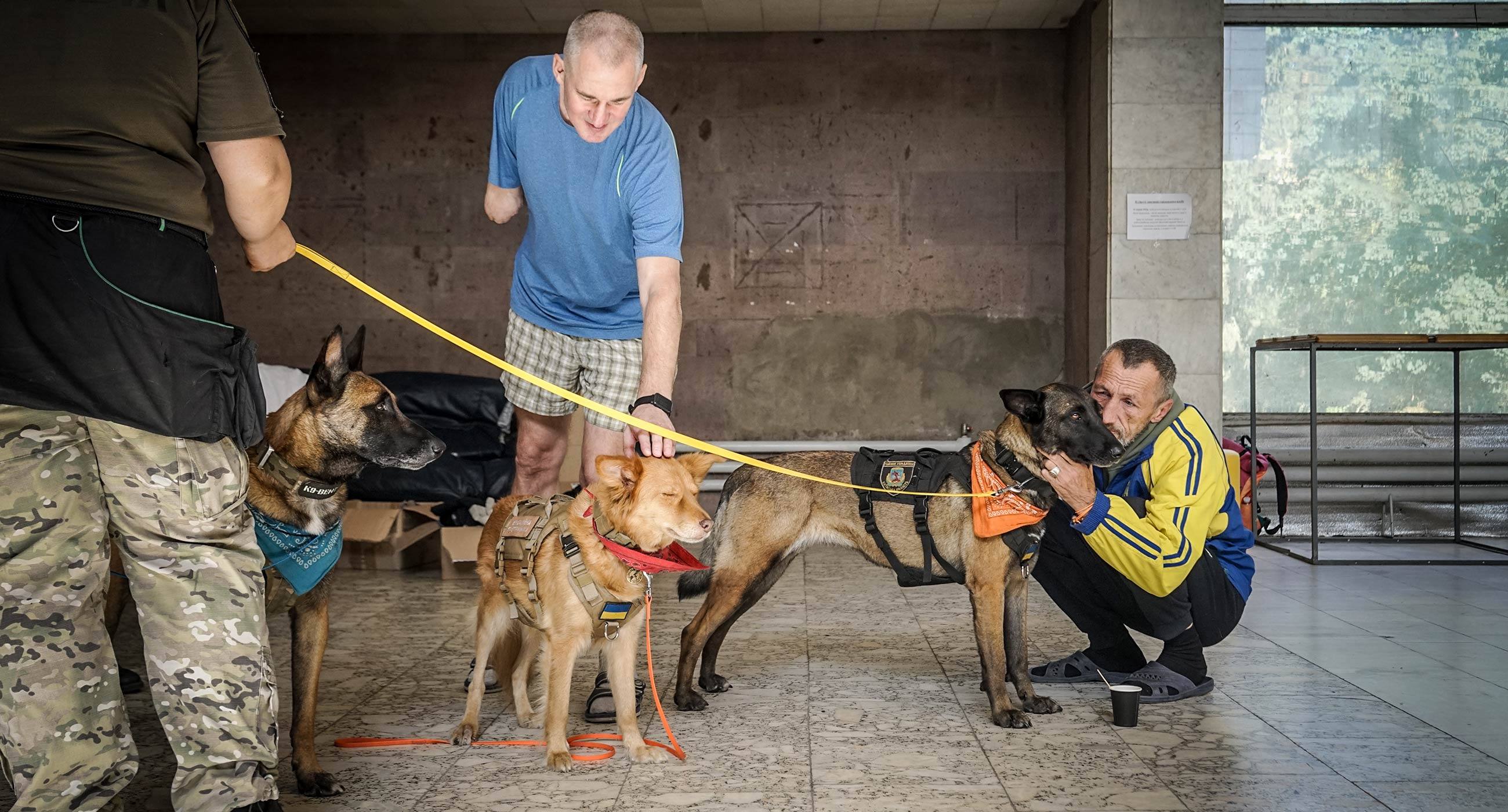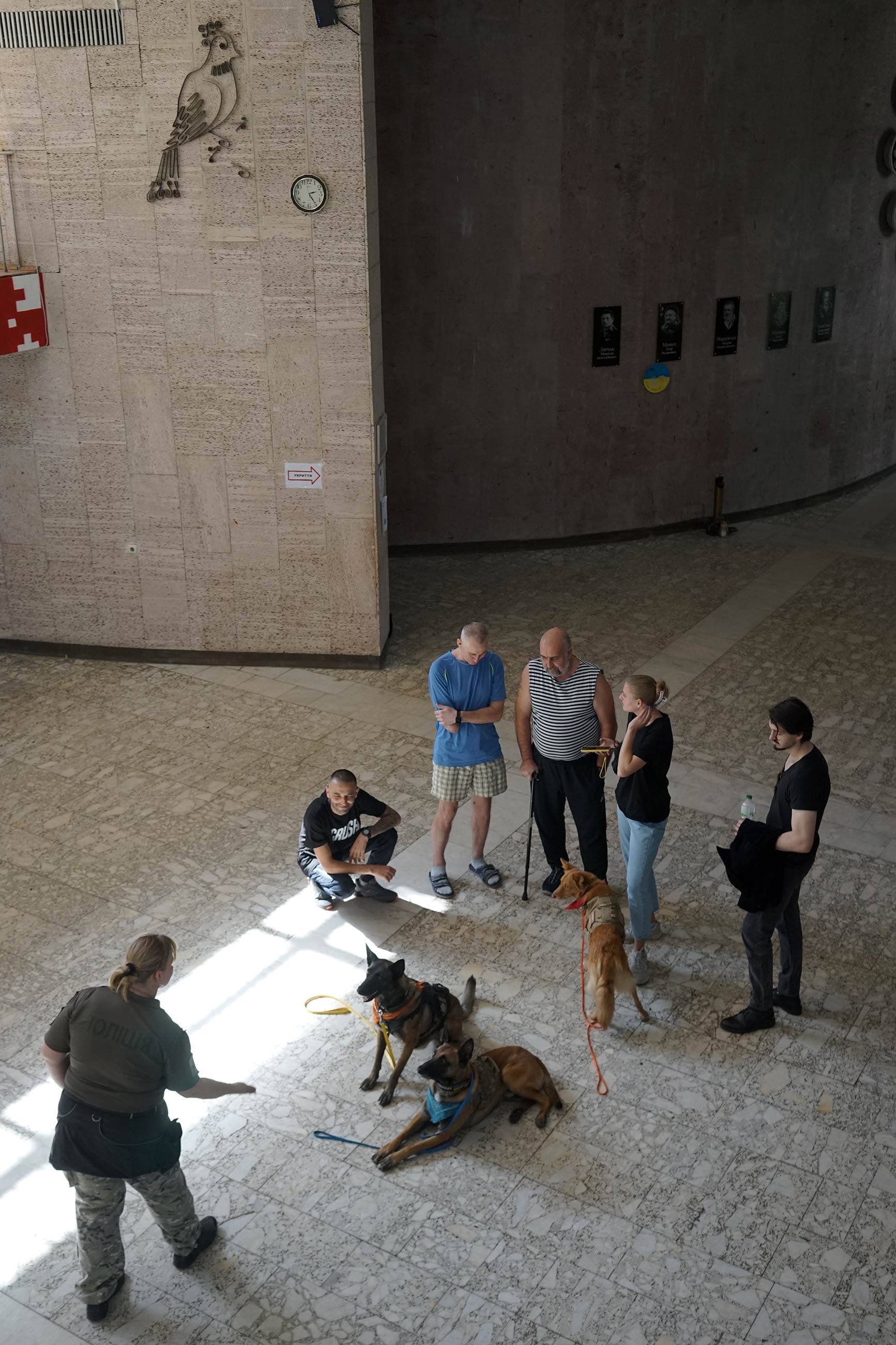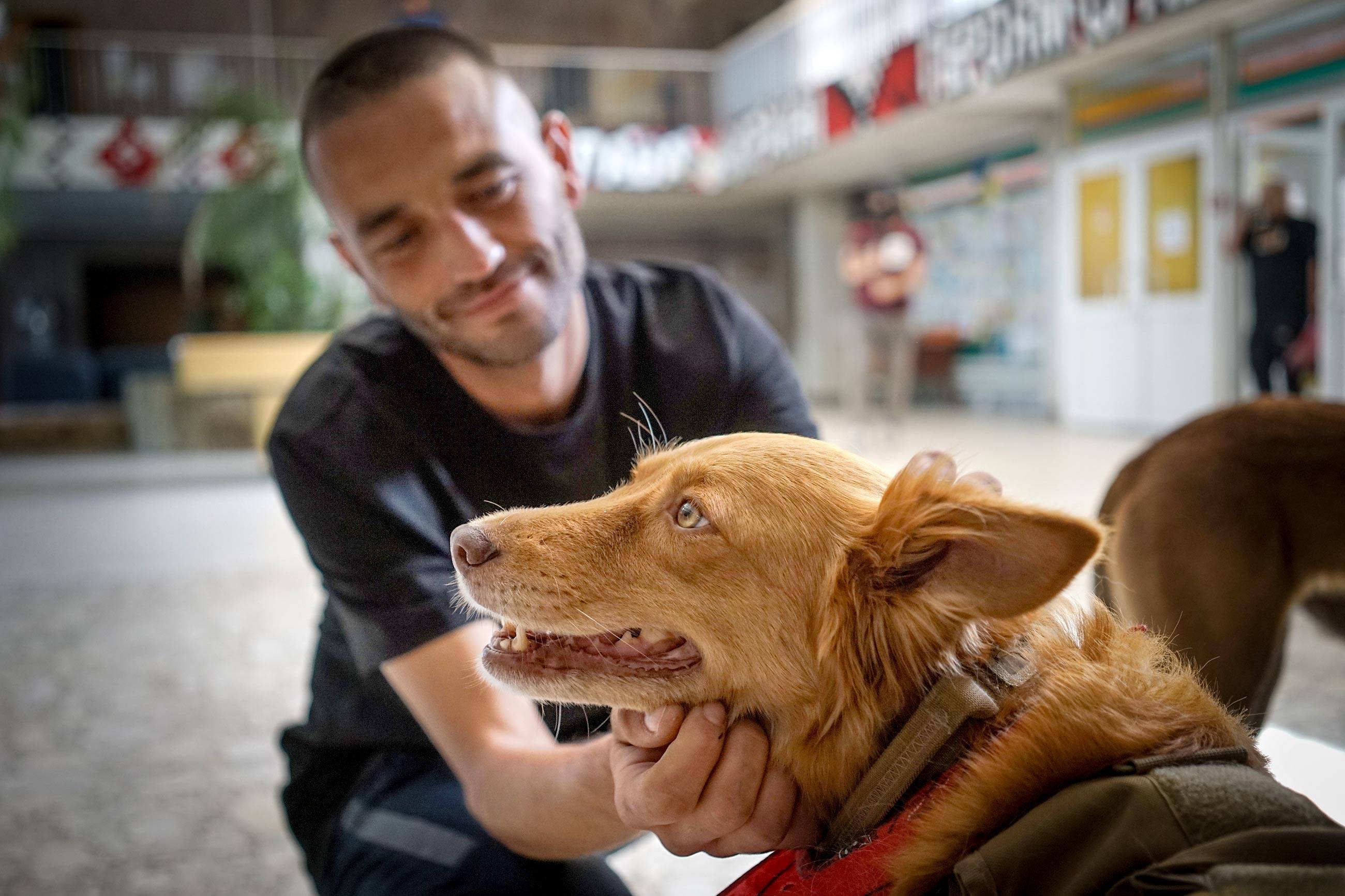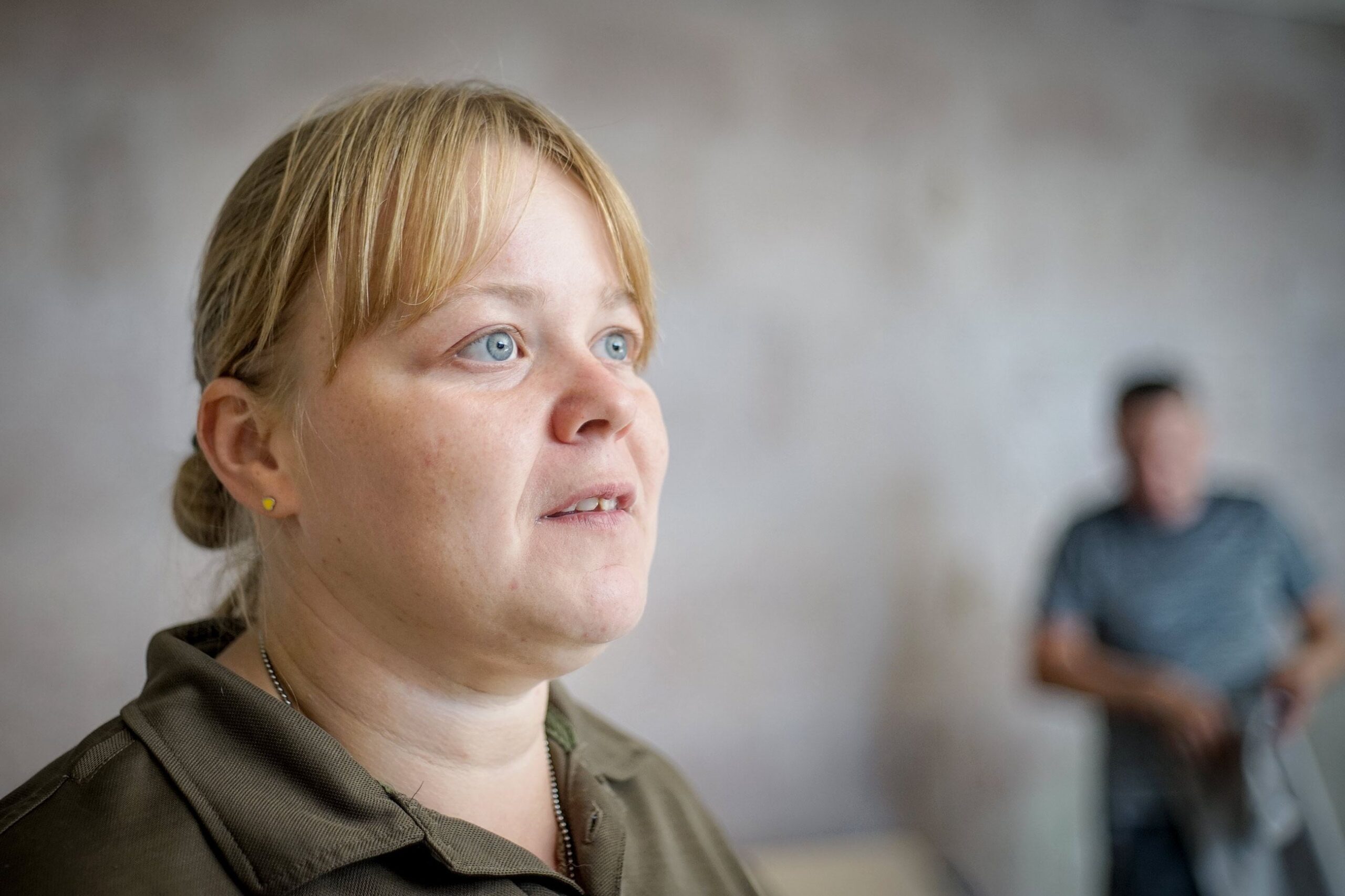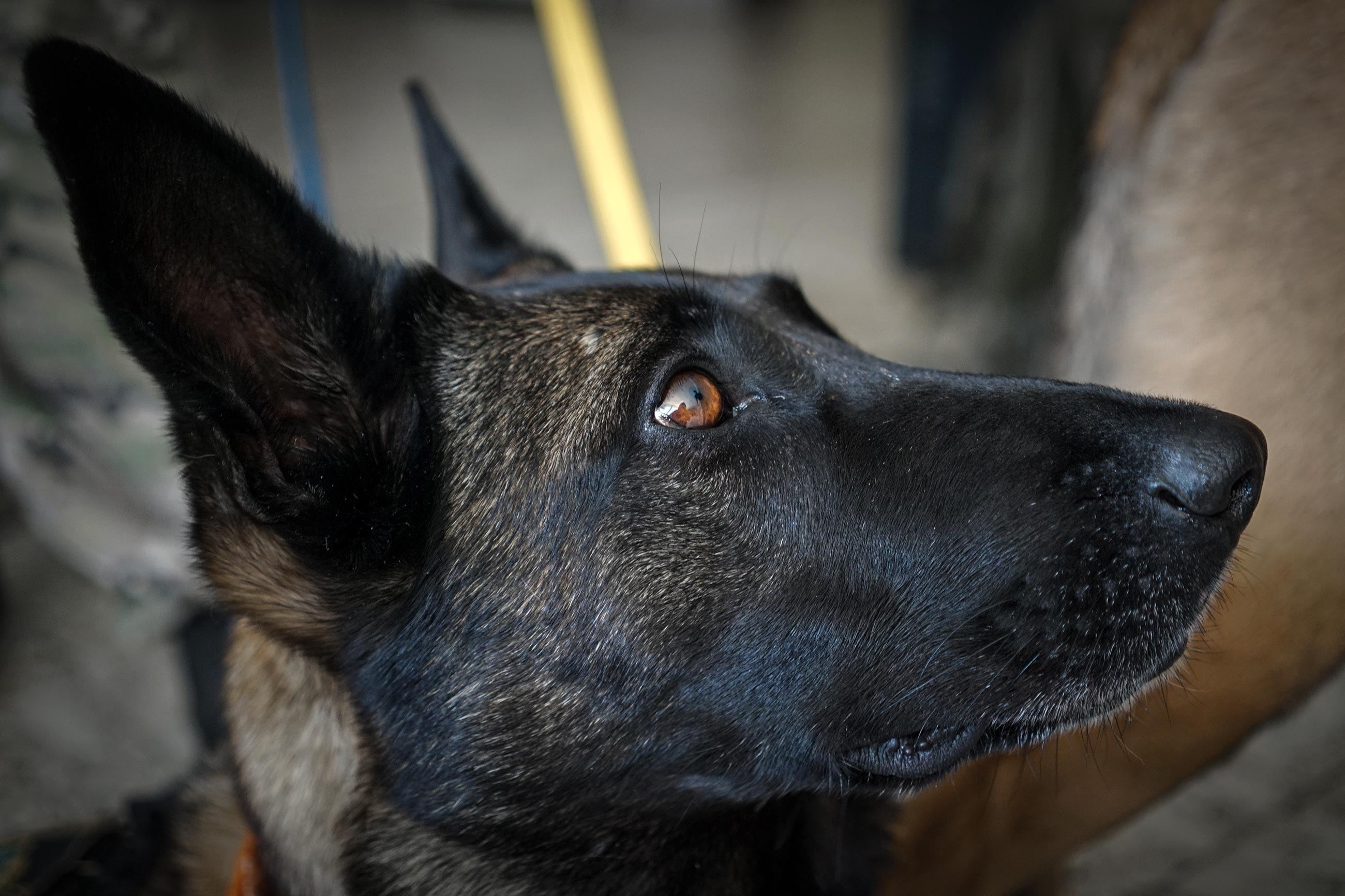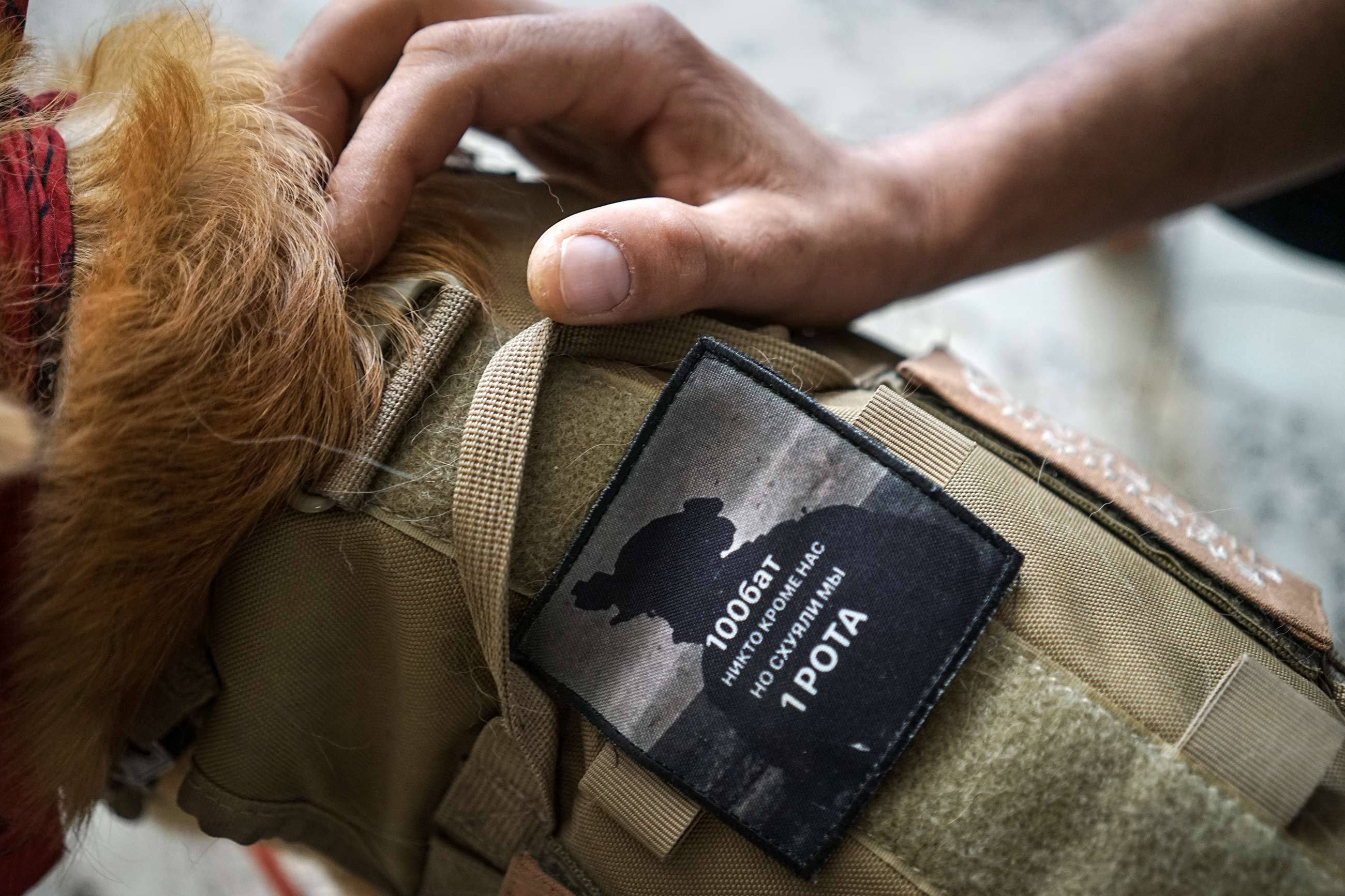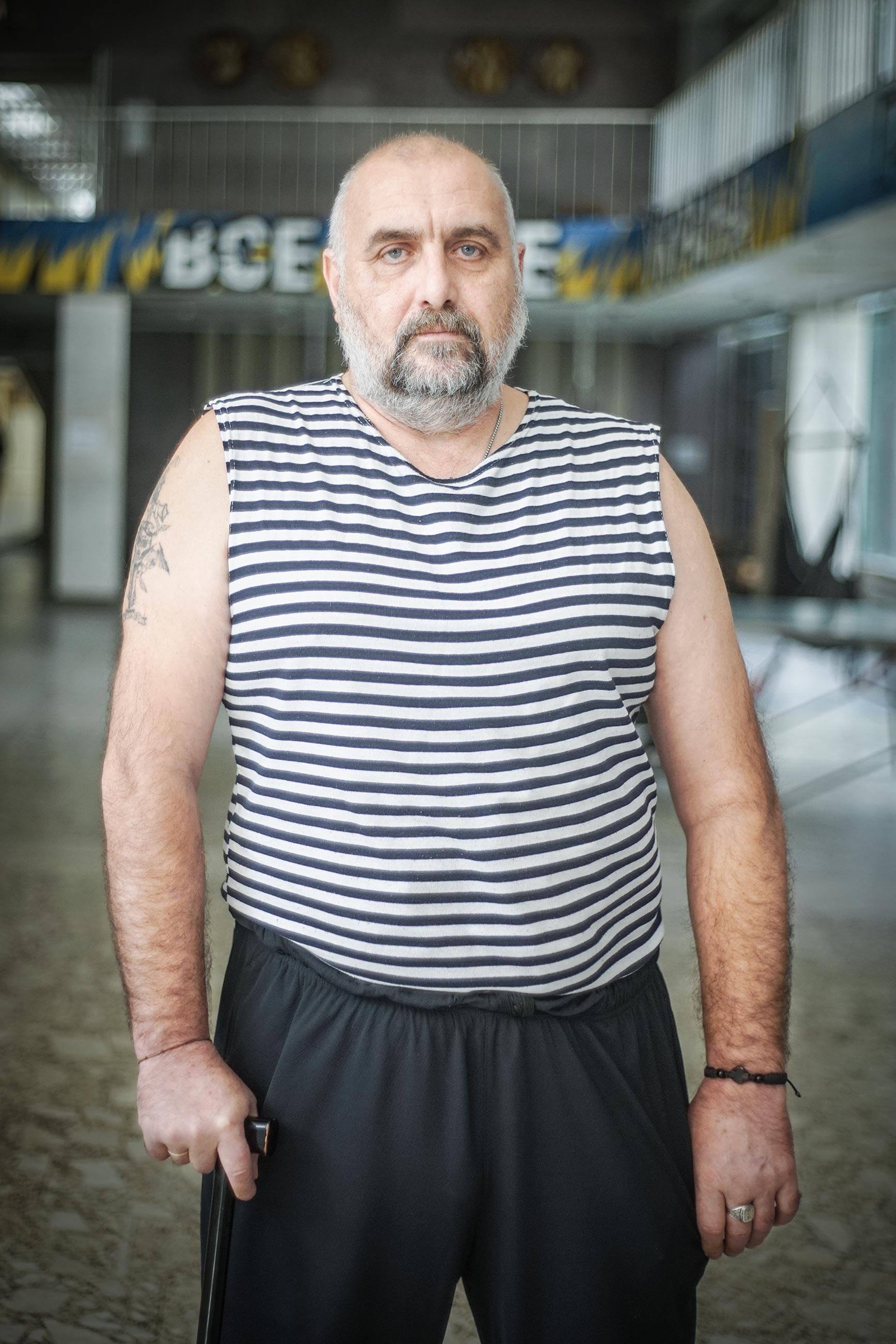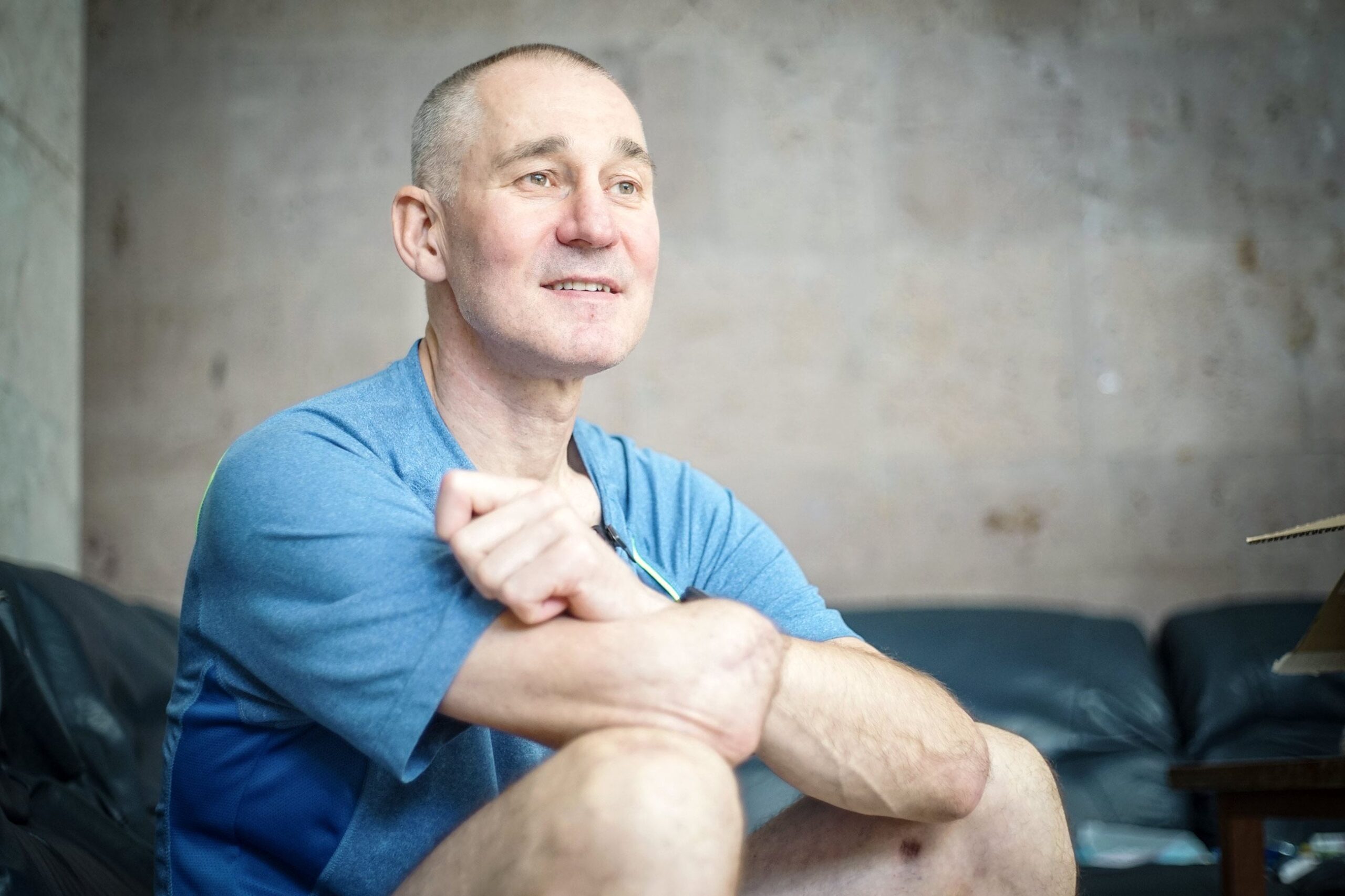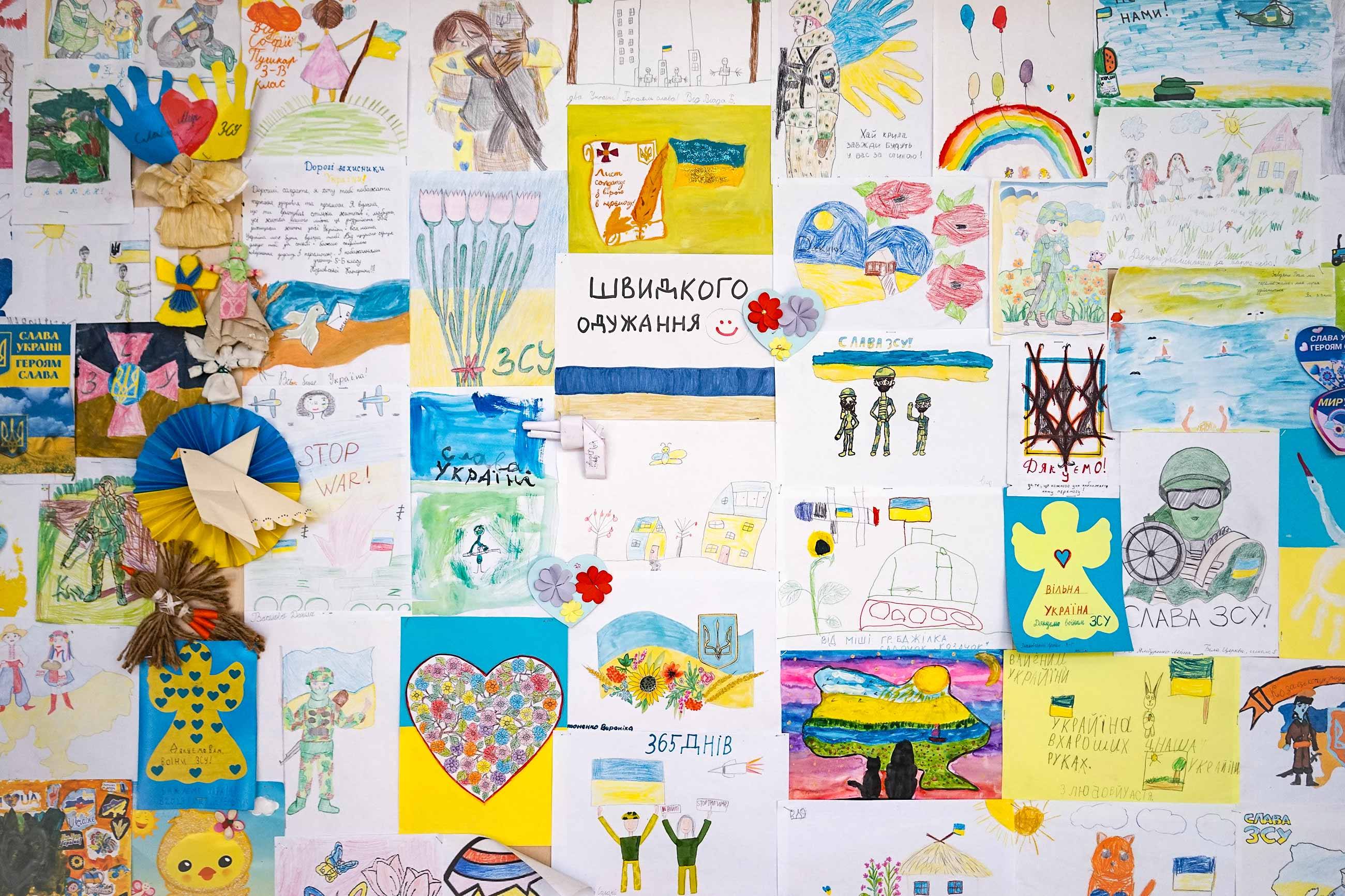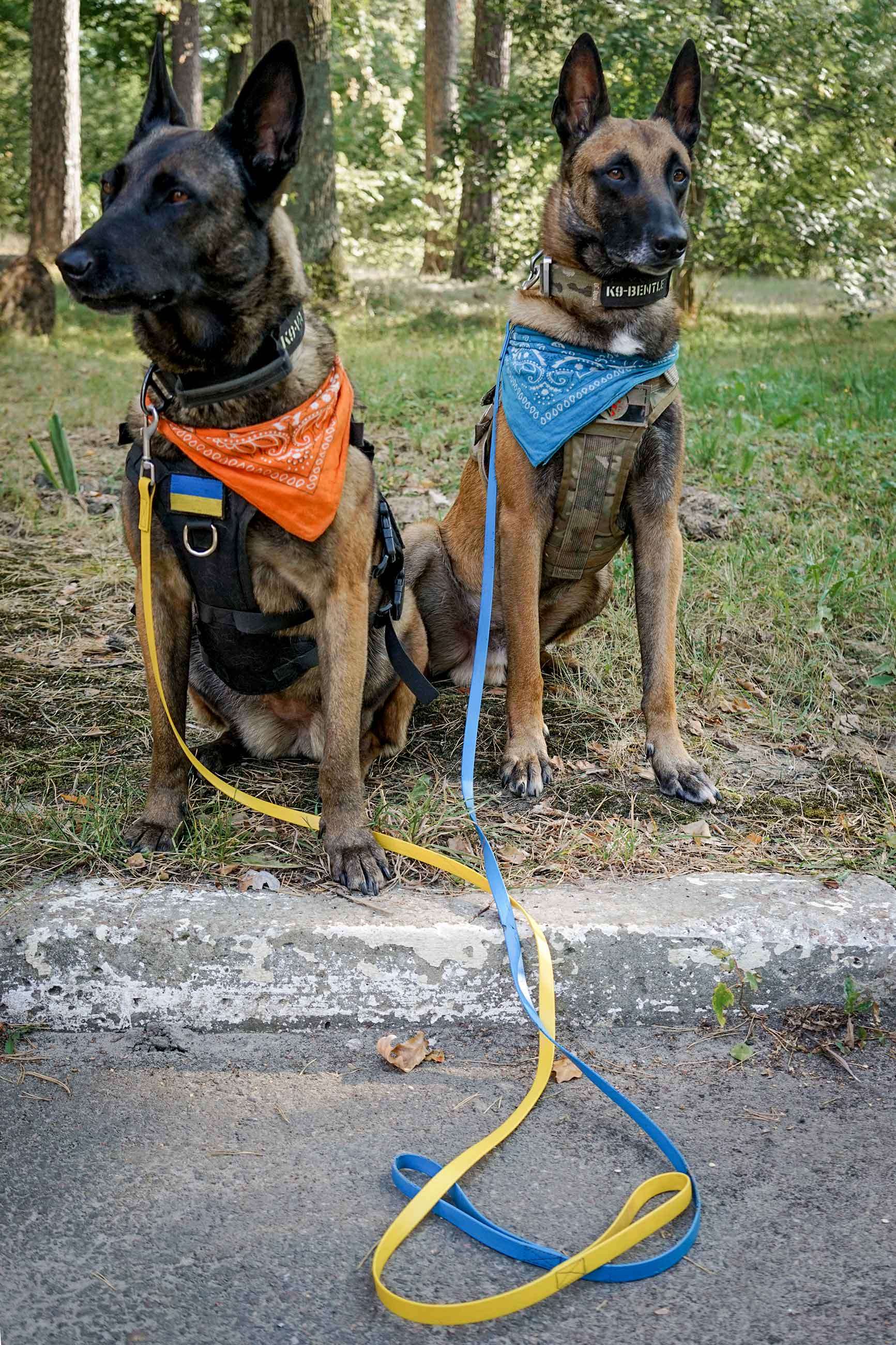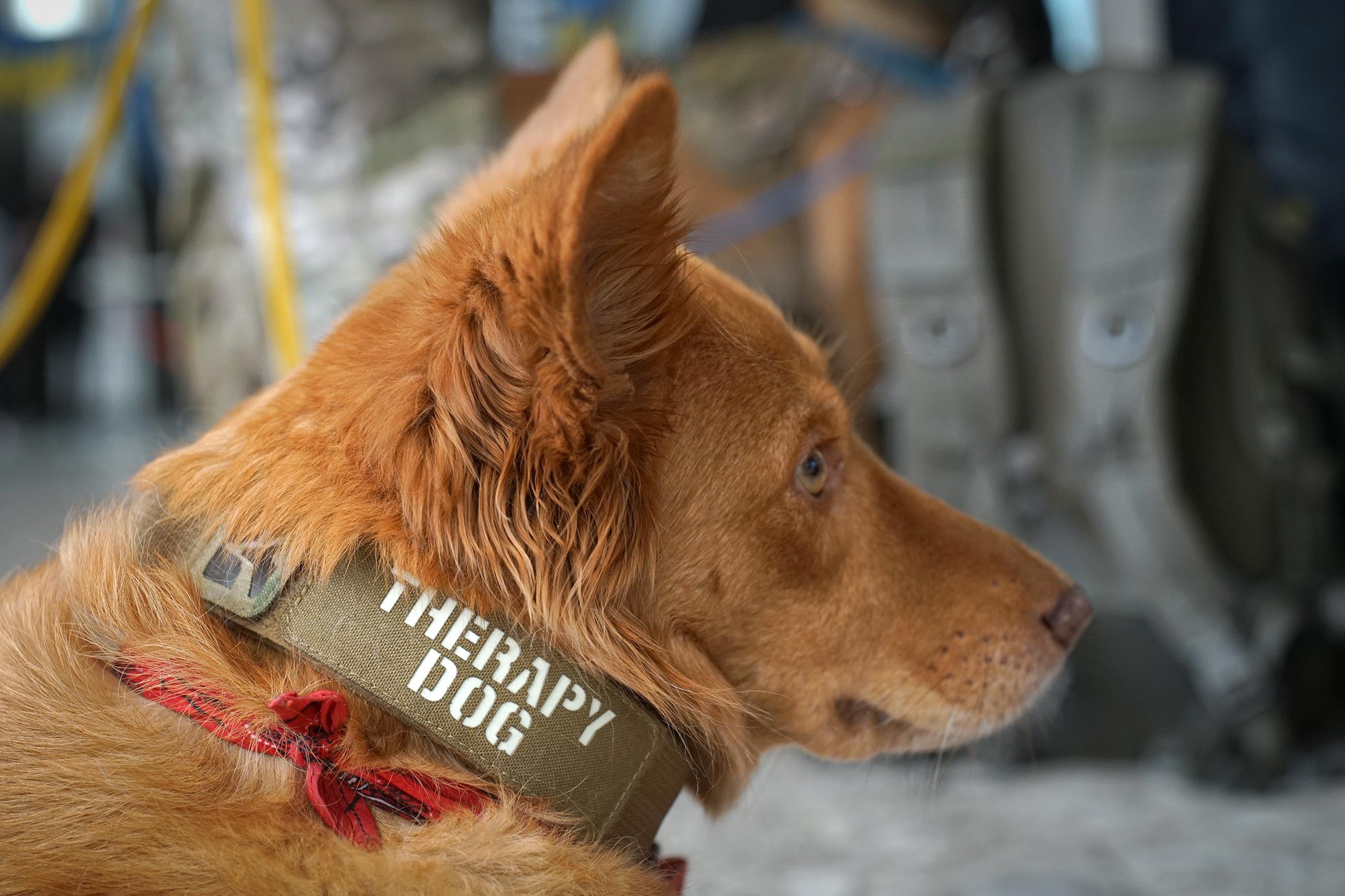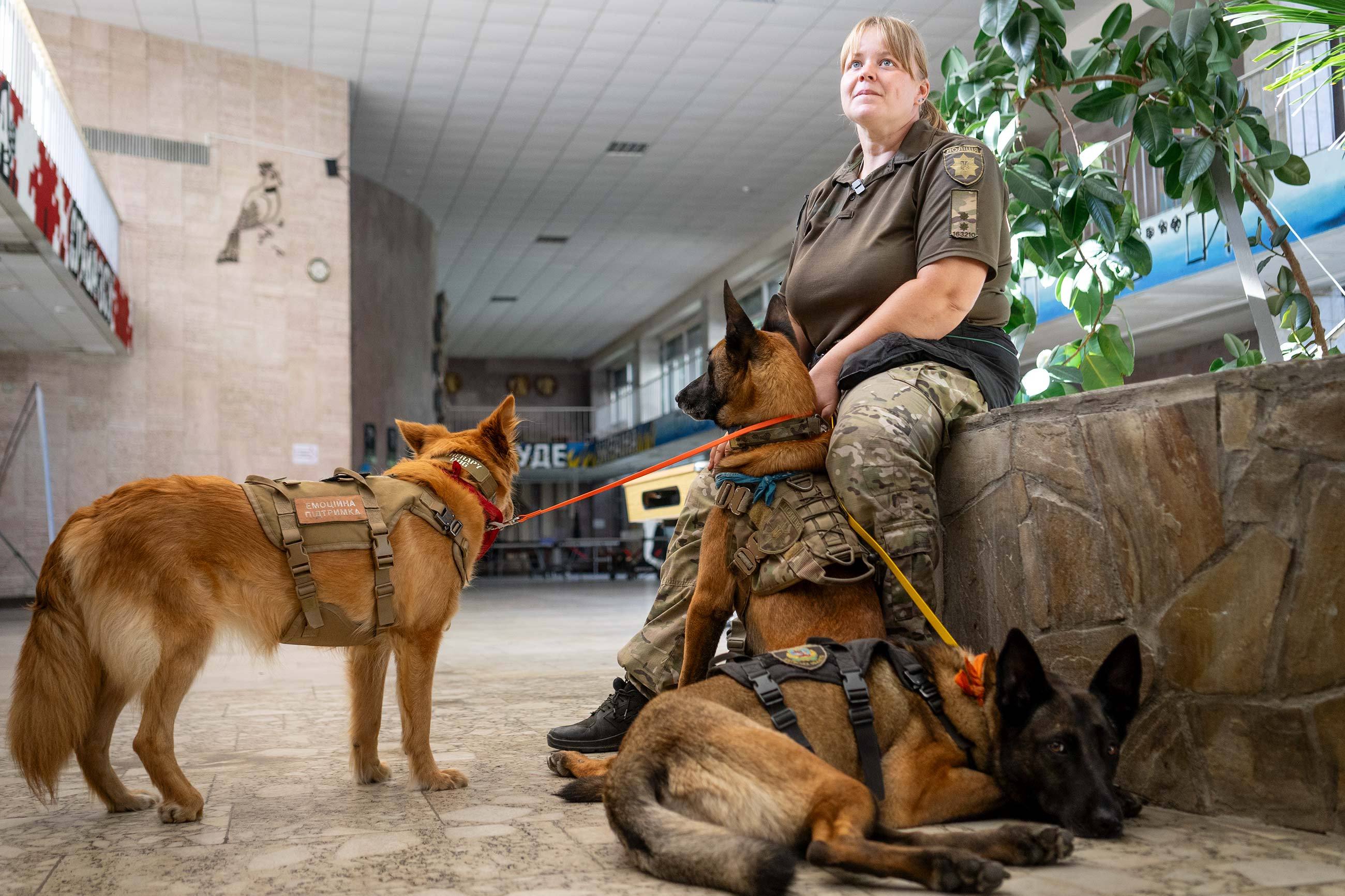Zaborona’s journalists Anastasiia Opryshchenko and Daniel Lekhovitser visited the Military Rehabilitation Center in Kyiv region (for the safety of its patients, we will not reveal the exact location). Here, the military undergo emotional therapy with specially trained dogs that help them socialize after months at the front. Zaborona spent a day with the first emotional support police dog in Ukraine, its partners, and traumatized soldiers — here’s how these little creatures help people learn to walk again and find peace when their minds keep wandering through the trenches of war.
I
The bus stops on a tiny, ten-meter-diameter circular road. In my head, I see images from thrillers where trains or buses drop off passengers in places with no human infrastructure — in dense forests and villages that no longer exist.
I look around — there really is no one here, this is the terminus. Further on, in the undergrowth, I can see a large tobacco-yellow monolith. The rehabilitation center for veterans, with all the socialist realism characteristics of the Soviet Ukraine, looks alien. I ask the photographer and the cameraman, and we all agree that the place resembles the former Yugoslavia: large rectangular buildings, concrete stairs, something that looks like a flat silo tower overgrown with ivy. From a distance, it might seem like a small repair plant. Only here they don’t produce anything, they try to fix people.
II
On the observation deck of the second floor, soldiers are talking, leaning on crutches and canes, or sitting in wheelchairs. Almost all of them are looking down, but either because of our cameras or for some other reason, they don’t want to come down. Three dogs are wagging their tails downstairs — they are the reason patients gather on the ground floor, and within half an hour the room begins to resemble a small, noisy beehive. Even those who had been shy or hesitant for the longest time are coming.

Photo: Ivan Chernichkin / Zaborona 
Photo: Ivan Chernichkin / Zaborona
“K-9” is the inscription on the dark green vests of the two Belgian shepherds. These are Wanda and Bentley, police dogs that search for missing people and explosives. The fact that they are, as their owner puts it, “wearing the uniform” means that they are conducting an emotional support session. While we are setting up the equipment, a man in a yellow and blue sports jacket presses his forehead against one of the dogs’ — during our visit, he didn’t look at his peers once. A little later, we were told that these dogs are probably the first (and for a long time the only) living creatures that soldiers who have returned from the front or are injured can come into contact with.
Kateryna Belyaeva is a policewoman for the Kyiv police with a permanent smile. Among the military, who rarely smile, Kateryna seems to be a generator of positivity: she manages to answer questions, keep an eye on the dogs, and gently invite the soldiers to come closer to Wanda and Bentley throughout our interview. Canine therapy, she tells us, involves instinctively obvious things: dogs improve mood, and tactile contact with them relaxes. “They remind us that there are sincere beings who get attached to us regardless of the circumstances. But all this time I have been asking myself a question: how can dogs help people who have returned from trench hell, those who are often unable to say a few words even to their closest ones?

Kateryna Belyaeva. Photo: Ivan Chernichkin / Zaborona
Perhaps the most striking example from the practice of Kateryna and her assistants is a man who returned from the front and is now confined to a wheelchair. He lost his mobility and was extremely aggressive about any offers of help. During one group rehabilitation and pet therapy session, he dropped a water bottle, which caused the entire room to freeze. Everyone was nervously waiting to see what would happen next: offering help meant getting into a scandal, and it was too late to let it go unnoticed. Only one of those present took the initiative — Wanda picked up the bottle with her teeth and held it up to the man’s hand. In 15 minutes, the bottle fell again, on purpose, and in 10 minutes — yet again, until it turned into a ritual familiar to him and the dog — the first sign of acceptance of help.
When I ask Kateryna about the qualities that make a dog a full-fledged participant in canine therapy, she lists a dozen conditions, as if it were an Ivy League application, from the absence of claustrophobia and fear of new rooms to steady motor skills that will prevent paws from wiggling in rooms with slippery surfaces. Another criterion is the dog’s ingenuity and initiative. Wanda demonstrates these qualities, and it’s not just about a bottle of water; she figured out how to become a guide dog herself. Not long ago, the Rehabilitation Center received a shell-shocked soldier. After suffering a concussion, he lost his spatial orientation and cannot move in a straight line — Wanda became a kind of GPS for him, came up with the idea to bite the sleeve of his peacoat, leading the way. Since then, the peacoat has become equipment of sorts and a local joke: during this particularly hot summer in Kyiv, the soldier kept wearing it, both for the sake of tradition and to be close to Wanda.

Belgian shepherd dog, Wanda. Photo: Ivan Chernichkin / Zaborona
As we speak, the hall is filling up with soldiers — some approaching the dogs for a few minutes, others staying for half an hour. One of them is missing an arm, another is moving around on a gurney, and the third is leaning on a cane. They are not the only ones undergoing rehabilitation — not so long ago, the red mongrel Polya, probably the favorite dog of the patients, also underwent it. Kateryna and her colleagues found Polya with a broken spine in a small village. “After an expensive surgery, she was not allowed to move,” says Kateryna. “She was nervous when left alone, so we started taking her with us everywhere. Polya would go with me to the checkpoint roadblock [at the beginning of the full-scale war]. Polya went with us to the de-occupied areas of Kyiv region, including Bucha and Irpin [where she provided support to survivors].“
In many ways, Polya is a pioneer and a record-breaker; not only is she the most popular among the military, but she also became Ukraine’s first emotional support police dog.
“Can I give Polya my chevron?” one of the soldiers asks at the exact moment when I am being told about Polya’s regalia.
He pins a chevron on her vest with a wartime slogan that is understandable and full of black humor. If you try to soften it, it says: “Who else but us?” To a certain extent, this also applies to the dogs who perform complex, exhausting work.

Photo: Ivan Chernichkin / Zaborona
III
Oleh Tatarenko is an almost caricatured Odesa resident, dressed in a blue and white navy vest. He is in his early 50s, and as a native Odesan, he predictably received the code name “Odesa.” He leans on a wooden cane with his right hand. I unconsciously give him the wrong hand for the handshake, and immediately, realizing my stupidity, put it down. He takes the cane in his other hand, shifts the weight, whispers “It’s okay, it’s okay,” and holds out his palm in return. Odesa often looks me in the eye but speaks almost in a whisper. I have to lean in very close to get him on the recorder. Our conversation is a bit like a dance — after each question, he takes a step to the side, as if avoiding contact, and stops only when the dogs approach him.
Before that, Kateryna gives me some advice: animals, as she says, “ground you” — with soldiers, it’s best to start a conversation with light topics like dogs. It helps: Odesa tells me how he trained service dogs at the Titan training center before the invasion, and a little later how he took stray dogs into the trenches. Gradually, we move on to the war itself. Oleh serves as a unit commander of the 45th Assault Brigade, which is participating in the de-occupation of Avdiivka and Bakhmut. Oleh’s memories are fuzzy — they zigzag, mixing the past and the future. He has three contusions. The last one was so severe that the man was admitted to the neurosurgery department, where he learned to walk again. Oleh’s rehabilitation is not likely to be finished: like many of his fellow soldiers, he needs to return to the front to rotate with others.

Oleh “Odesa” Tatarenko. Photo: Ivan Chernichkin / Zaborona
While we are talking, a man in shorts and a T-shirt approaches one of the dogs. His right arm is amputated above the elbow. He reaches for the dog’s neck. Odesa sees this and quickly comes to life.
“Man, did you wash your hands before that?” he jokes. Among the military, this is allowed: they often joke about each other’s injuries, but they will take such a joke from a civilian painfully.
Odesa hugs the man and pulls him close. This is Andriy “Magician” Markov, also of the 45th Assault Brigade, and a unit commander as well. Odesa carried Magician on his back during a tactical semi-siege. Oleh kisses my hand and passes the baton to Magician, but seeing how he is embarrassed and has a hard time making contact, Oleh periodically returns to insert some story into the conversation. Markov tries to avoid eye contact. He only tells me how he saw a wild boar near Bakhmut or how a goat got into his trench, and the rest of the time he scrolls through his phone and pretends not to notice me. He relaxes when he strokes Polya’s copper-red fur, which is probably the case when you can forget about that “get them talking” maxim journalists are tired of. Now it is enough to just watch.

Andriy “Magician” Markov. Photo: Ivan Chernichkin / Zaborona
IV
Polya, Bentley, and Wanda have a very busy schedule. They come to the Rehabilitation Center once a week, but that’s not all: in addition to their police work, they provide emotional support, visit the clinic of the Institute of Traumatology and Orthopedics once a week, a clinic at the Ministry of Internal Affairs, and Wanda also participates in sessions with women who survived sexual violence during the occupation of northern Ukraine.
Kateryna says that there are many professionally trained dogs and dog handlers in Ukraine who, together with psychologists, could popularize canine therapy. However, she immediately corrects herself: Ukraine does not have the necessary infrastructure — from cars for dog handlers and their pets to food and treatment for dogs — to make canine therapy a systematic and state-supported procedure. Despite the large number of suitable dogs, animals that can visit the military on a regular basis are a minority.
That’s why Bentley, Wanda, and Polya are so busy. Three to four visits per week is a lot for a dog. “Dogs are one-vector creatures,” explains Kateryna. “When a dog participates in therapy, it is exposed to many stimuli: noise, a lot of people, being stroked from one side and from the other. But they can only focus on one task, and because of the large number of them, they get tired quickly.”
Therefore, dogs need to undergo recreational massage and water gymnastics courses on a regular basis, as well as more frequent check-ups in veterinary clinics. Kateryna admits that due to the large number of military and civilians undergoing rehabilitation, she and her dogs have to make sacrifices: “Polya, Bentley, and Wanda work three to four times more than the norm. I look again at Polya’s new chevron — “Who else but us?”

Children’s drawings on the wall of the rehabilitation center. Photo: Ivan Chernichkin / Zaborona
V
If you google “canine therapy”, the search engine will display 570 studies in different languages: ‘Canine therapy for neurodiverse children’, ‘Pet therapy in work with prisoners’, ‘Canine therapy for war veterans’, or ‘for patients with mental disorders’. The thing that unites all these areas is an attempt to make it possible for people to interact with people. And since the ability to negotiate is not the strongest human quality, a dog is needed as an intermediary.
In the evening after the interview, Kateryna sends us the “White Book” — a protocolized manual that describes canine-assisted therapy in general, the types of interaction with animals, the standards that the dogs should meet, animal care methods, recovery procedure for dog handlers, and a few other points.
To encourage people to socialize, canine therapy should be a regulated procedure. And strictly speaking, Kateryna emphasizes, what we see now is an emotional support session, and not canine therapy. Canine therapy is a complementary procedure to the classical methods of psychological help. This means that during therapy with animals, not only the dog handler and the dogs should be present, but also the psychologist and, in an ideal scenario, an intermediary between them who understands the specifics of both psychology and dog therapy — they make sure that neither discipline prevails, and also work as a connecting agent.

Belgian shepherds Wanda (left) and Bentley. Photo: Ivan Chernichkin / Zaborona 
Polya is the first emotional support dog in Ukraine. Photo: Ivan Chernichkin / Zaborona
In the American-British version of canine therapy, it is necessary to record it, for example, on a video camera. After that, the recording will be reviewed by all specialists to study the patient’s reaction, their microfacial expressions, body language, and the progression or regression of their social adaptation. The same applies to dogs: dog handlers observe how their pets react. This is still a young discipline that is only improving at the level of feedback: what a person gets from a dog and what a dog gets from a person.
At the same time, an institution where the therapy takes place should have special infrastructure — this is something Kateryna especially lacks. The rehabilitation center where we are staying is not equipped with special zoning that would allow the dogs to be secluded — for example, Kateryna and her four-legged partners need to enter the room through a special corridor closed to others, and leave the same way. This is necessary to minimize the dogs’ contact with patients before and after therapy and to keep the animal’s focus as much as possible during the session itself. “Often, after a session, we leave through the main entrance,” Kateryna says, “and the guys [military] ask to play with the dog — I can’t say no to them.
She can’t say no to us, either. After the interview, we also record a video. Kateryna gives the animals a command to stand up, but in between shots, they lie at her feet, apparently having almost completely exhausted their batteries. We shoot the last shots of the dogs leaving the building and heading to a lake in the forest, where they will no longer be police officers, therapists, and a mini-center for emotional support. For a while, they will splash around in the water and be just dogs.

Photo: Ivan Chernichkin / Zaborona

